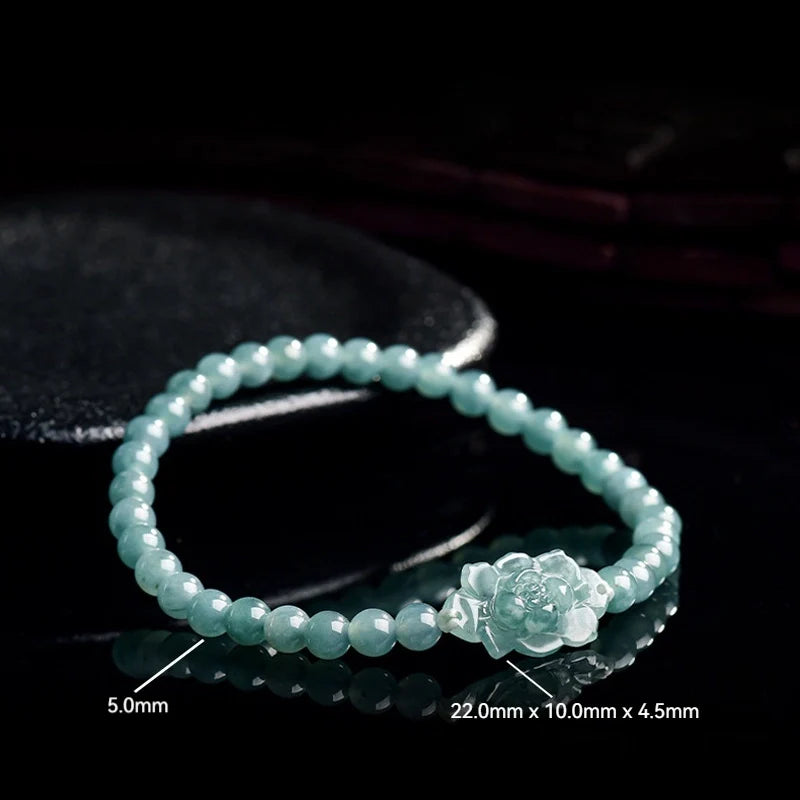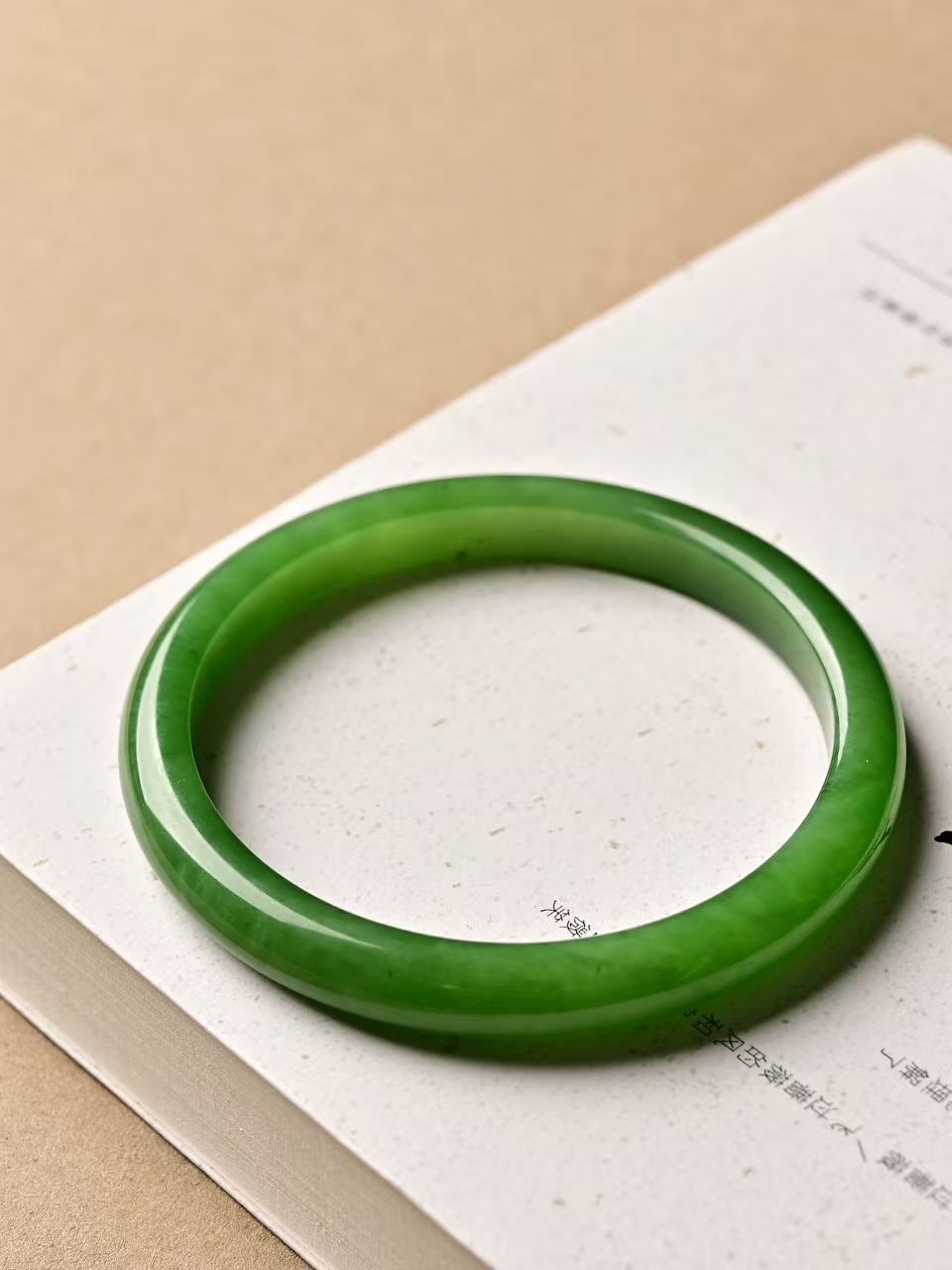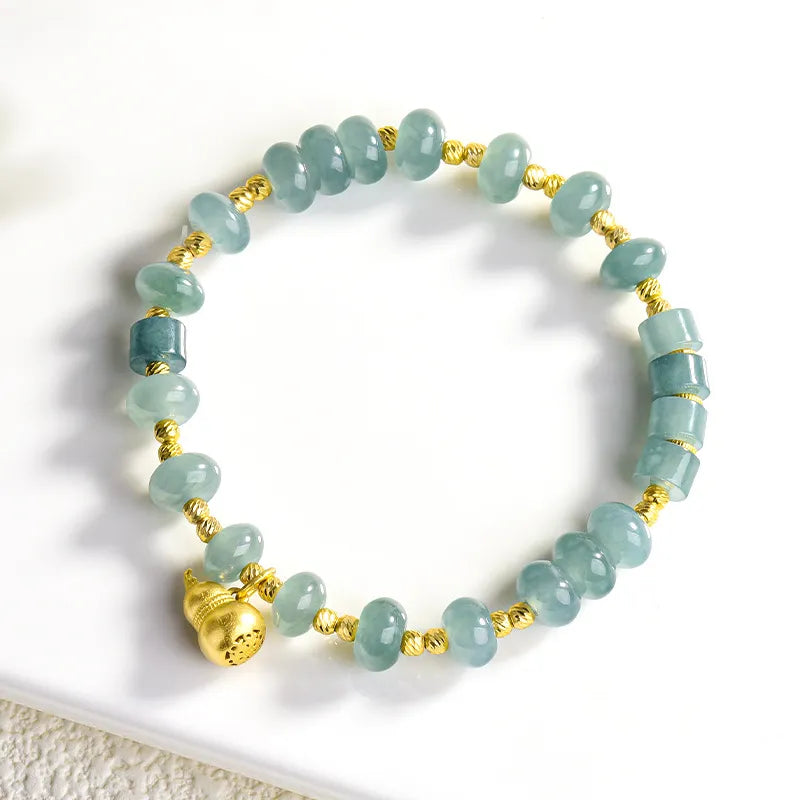How to Assess the Transparency of Jade Bangles: A Detailed Guide for Buyers and Enthusiasts
Jade bangles are prized for their beauty, cultural significance, and unique optical properties, with transparency being a key factor in determining their quality and value. Whether you’re a seasoned collector or a first-time buyer, understanding how to evaluate transparency can help you make informed decisions. Below, we explore the nuances of jade transparency, from natural variations to practical assessment techniques.

Understanding Jade Transparency: Natural Variations and Types
Jade comes in two primary varieties—nephrite and jadeite—each with distinct transparency characteristics. Nephrite, the more common type, typically ranges from translucent to opaque, with a waxy or oily luster. Its internal structure often contains fibrous inclusions, which can diffuse light and reduce clarity. Jadeite, on the other hand, is known for its higher translucency, with some specimens exhibiting glass-like clarity. This rarity makes jadeite more sought after in fine jewelry.
The transparency of jade is also influenced by its mineral composition. Pure jadeite with minimal impurities tends to be more transparent, while nephrite’s fibrous matrix creates a softer, more diffused appearance. Additionally, natural jade may display “water lines” or internal fractures, which can affect light transmission. These features are not flaws but rather part of the stone’s natural character, adding to its uniqueness.
Practical Methods to Evaluate Jade Bangle Transparency
Assessing transparency requires more than just a casual glance. Start by examining the bangle under natural daylight, as artificial lighting can distort its appearance. Hold the piece against a light source, such as a window or a lamp, and observe how light passes through it. A highly transparent jadeite bangle will allow light to penetrate deeply, creating a bright, even glow. In contrast, nephrite or lower-quality jadeite may appear cloudy or mottled, with light blocked by internal inclusions.
Another effective technique is to compare the bangle’s edges and surface. A transparent jadeite bangle will have sharp, well-defined edges that reflect light clearly, while opaque or semi-translucent pieces may appear dull or blurred at the edges. You can also check for “windowing,” a phenomenon where certain areas of the bangle are more transparent than others. This is common in carved or irregularly shaped pieces and doesn’t necessarily indicate poor quality.
Common Misconceptions About Jade Transparency
Many buyers assume that higher transparency always equals better quality, but this isn’t always the case. While jadeite’s glassy clarity is highly valued, some nephrite bangles with a subtle translucency are equally prized for their understated elegance. Additionally, transparency can be enhanced through treatments like waxing or dyeing, which are sometimes used to mask imperfections. These treatments are not inherently deceptive but should be disclosed by sellers to maintain transparency (no pun intended).
It’s also important to distinguish between transparency and luster. A jade bangle can have a high luster (a shiny, reflective surface) without being highly transparent. For example, a well-polished nephrite bangle may gleam brilliantly under light but remain mostly opaque. Conversely, a matte-finished jadeite bangle might appear less transparent but still possess excellent internal clarity. Understanding this distinction helps avoid confusion when evaluating a piece.
Factors Influencing Transparency Over Time
The transparency of a jade bangle can change slightly over time due to environmental factors and wear. Prolonged exposure to sunlight or heat may cause the stone to dry out, potentially reducing its translucency. Similarly, contact with oils, lotions, or chemicals can create a temporary film on the surface, dulling its appearance. Regular cleaning with a soft cloth and mild soap can help maintain the bangle’s natural luster and transparency.
Cracks or scratches on the surface can also impact how light interacts with the jade. While minor blemishes are common in natural stones, deep fractures may scatter light and reduce clarity. When inspecting a bangle, look for smooth, uninterrupted surfaces that allow light to pass through uniformly. If you notice significant damage, consider having the piece professionally polished or repaired to restore its optical properties.
By mastering these assessment techniques and understanding the natural variations in jade transparency, you can confidently evaluate bangles and appreciate their unique beauty. Whether you prefer the icy clarity of jadeite or the soft glow of nephrite, transparency is just one aspect of what makes jade a timeless and cherished gemstone.






